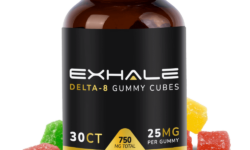THCa Flower vs. CBD Flower: Exploring the Contrasts
In the evolving landscape of cannabis products, THCa flower and CBD flower have emerged as popular choices among consumers seeking distinct effects and benefits. Whether you’re looking for therapeutic relief or a mild, non-intoxicating experience, understanding the differences between these two types of flower is essential.
THCa (tetrahydrocannabinolic acid) is a non-intoxicating cannabinoid found in raw cannabis plants. Bud THCa flower refers to cannabis buds that have not undergone decarboxylation, the process that activates THC (tetrahydrocannabinol). This means bud THCa flower does not produce psychoactive effects when consumed in its raw form. Instead, it offers potential therapeutic benefits without the high commonly associated with THC.

The Appeal of THCa Flower
THCa flower appeals to users looking for the medicinal benefits of cannabis without experiencing euphoria or impairment. It’s often chosen for its potential anti-inflammatory, neuroprotective, and antiemetic properties, making it suitable for those seeking relief from conditions such as chronic pain, inflammation, and nausea.
Understanding CBD Flower
On the other hand, CBD (cannabidiol) flower contains significant levels of CBD and minimal THC, typically less than 0.3% THC as mandated by federal law in the United States. CBD flower is renowned for its therapeutic potential without the psychoactive effects of THC. It is widely used for its reported benefits in reducing anxiety, alleviating pain, and promoting relaxation.
Key Differences Between THCa Flower and CBD Flower
- Psychoactive Effects: THCa flower is non-intoxicating, while CBD flower does not produce a high due to its low THC content.
- Therapeutic Benefits: THCa flower is valued for potential medicinal properties such as anti-inflammatory effects, while CBD flower is sought after for its reported anxiolytic and analgesic properties.
- Legal Considerations: CBD flower with less than 0.3% THC is federally legal in the US, whereas THCa flower’s legal status may vary depending on local regulations.
- Consumption Methods: THCa flower is often consumed raw or juiced, while CBD flower is commonly smoked, vaped, or used to make edibles and topicals.
- Availability and Market Demand: CBD flower is more widely available and has a larger consumer base, whereas THCa flower may be less commonly found due to its niche appeal and specific consumer preferences.
Choosing Between THCa Flower and CBD Flower
When deciding between THCa flower and CBD flower, it ultimately comes down to personal preference and desired effects. If you seek therapeutic benefits without psychoactive effects, THCa flower might be suitable. Conversely, CBD flower could be the better choice if you prefer a milder experience with potential calming effects.

Conclusion
THCa flower and CBD flower offer distinct experiences and benefits, catering to different consumer needs and preferences within the cannabis market. Whether you opt for the non-intoxicating potential of THCa or the therapeutic versatility of CBD, both types of flower represent innovative avenues in cannabis consumption, providing options for users seeking natural remedies without the high associated with traditional cannabis use.



